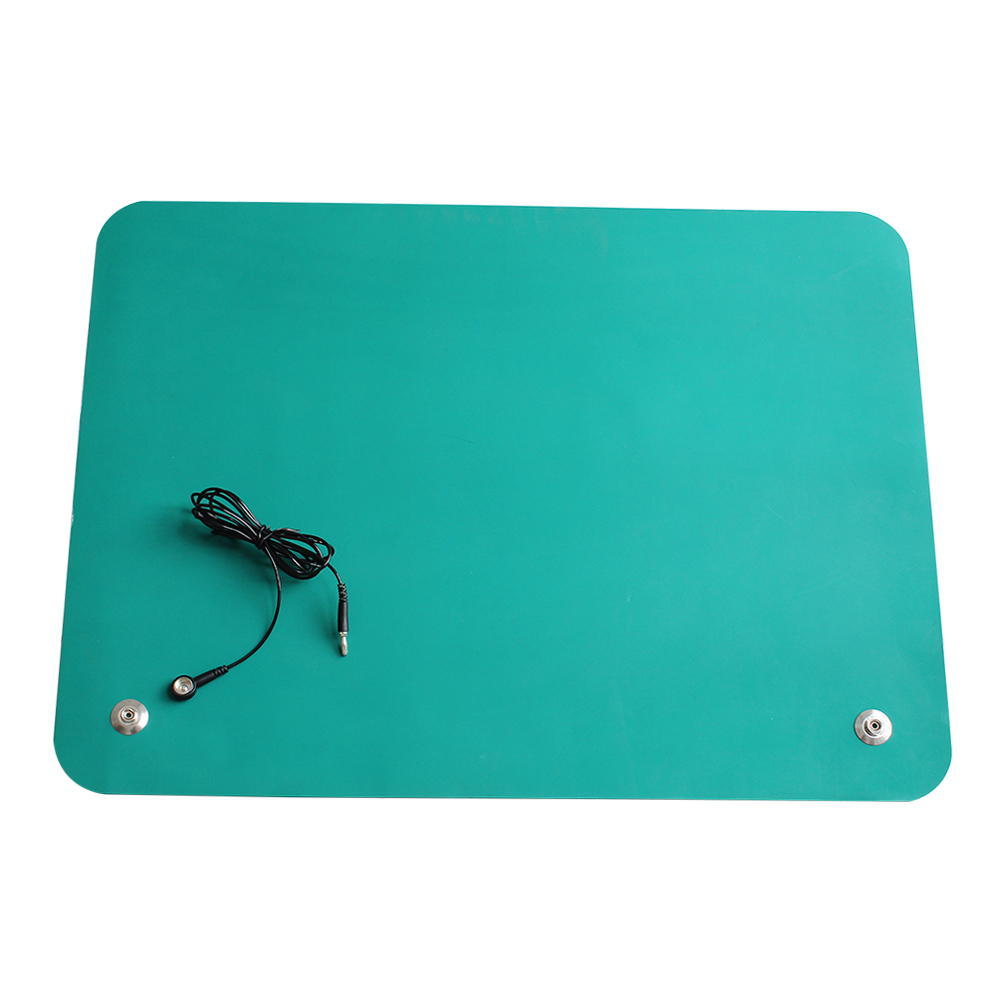How Antistatic Mats Control Static Electricity?
Upload Time:
Jun 07, 2025
How Antistatic Mats Control Static Electricity?
Antistatic mats work by safely controlling and dissipating static electricity from people or objects placed on them, protecting sensitive electronics from electrostatic discharge (ESD). Here's how they function:
Core Principles:
-
Controlled Conductivity
-
Made from materials with specific electrical resistance (typically 10⁶ to 10⁹ ohms).
-
This allows slow, safe dissipation of charge—fast enough to prevent ESD buildup, but slow enough to avoid sparks/damage.
-
-
Grounding Connection
-
Mats include a grounding point (e.g., snap or terminal).
-
Connected via a grounding cord to an ESD ground (e.g., grounded outlet, dedicated ground point).
-
Critical: Without proper grounding, the mat won’t work!
-
-
Two Key Layers (Common Design):
-
Top Layer: Static-dissipative vinyl/rubber (drains charge from objects/persons).
-
Bottom Layer: Conductive material (often carbon-loaded) to spread charge evenly to the ground point.
-
How They Protect Electronics:
-
For People: When you stand/wear an ESD wrist strap connected to the mat, static flows from your body → mat → ground.
-
For Components: Electronics placed on the mat discharge safely through its surface → ground, avoiding sudden zaps to sensitive circuits.
Types of Mats:
| Type | Resistance Range | Use Case |
|---|---|---|
| Conductive Mats | 10⁴ - 10⁶ Ω | High-voltage areas (not for ICs!) |
| Dissipative Mats | 10⁶ - 10⁹ Ω | Standard electronics work (most common) |
| Insulative Mats | >10¹² Ω | Not ESD-safe! (traps charge) |
Why Resistance Matters:
-
Too Low (Conductive): Risk of short circuits if live components contact the mat.
-
Too High (Insulative): Charge can’t flow → ESD risk remains.
-
"Sweet Spot" (10⁶–10⁹ Ω): Safe, controlled discharge without damaging microelectronics.
Maintenance Tips:
-
Clean with ESD-safe cleaners (avoid alcohol or silicone).
-
Test resistance regularly with a surface resistivity meter.
-
Ensure the ground connection remains secure.
By providing a controlled path to ground, antistatic mats prevent invisible but destructive static discharges—a $5 billion/year problem in electronics manufacturing!
Relevant News






